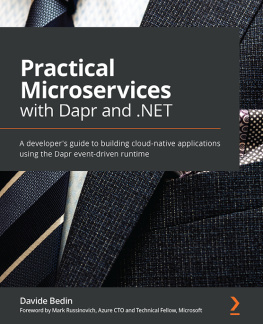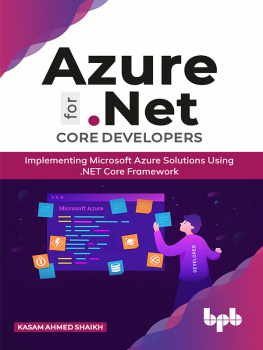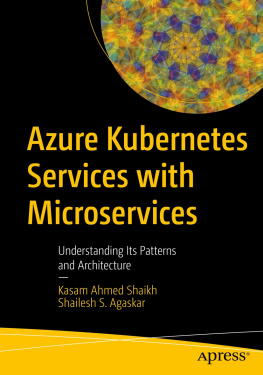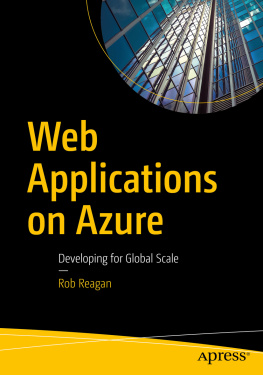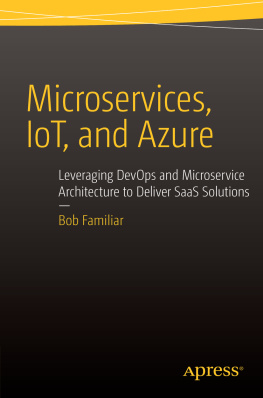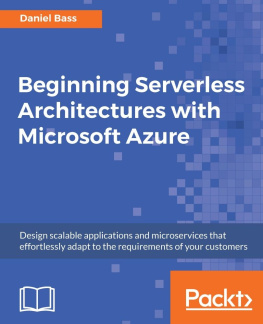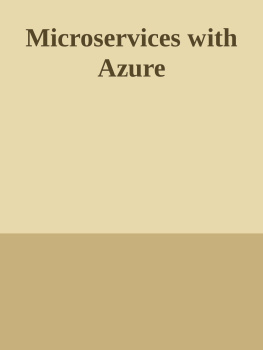Ovais Mehboob Ahmed Khan - Developing Microservices Architecture on Microsoft Azure with Open Source Technologies
Here you can read online Ovais Mehboob Ahmed Khan - Developing Microservices Architecture on Microsoft Azure with Open Source Technologies full text of the book (entire story) in english for free. Download pdf and epub, get meaning, cover and reviews about this ebook. year: 2021, publisher: Microsoft Press, genre: Home and family. Description of the work, (preface) as well as reviews are available. Best literature library LitArk.com created for fans of good reading and offers a wide selection of genres:
Romance novel
Science fiction
Adventure
Detective
Science
History
Home and family
Prose
Art
Politics
Computer
Non-fiction
Religion
Business
Children
Humor
Choose a favorite category and find really read worthwhile books. Enjoy immersion in the world of imagination, feel the emotions of the characters or learn something new for yourself, make an fascinating discovery.

- Book:Developing Microservices Architecture on Microsoft Azure with Open Source Technologies
- Author:
- Publisher:Microsoft Press
- Genre:
- Year:2021
- Rating:4 / 5
- Favourites:Add to favourites
- Your mark:
- 80
- 1
- 2
- 3
- 4
- 5
Developing Microservices Architecture on Microsoft Azure with Open Source Technologies: summary, description and annotation
We offer to read an annotation, description, summary or preface (depends on what the author of the book "Developing Microservices Architecture on Microsoft Azure with Open Source Technologies" wrote himself). If you haven't found the necessary information about the book — write in the comments, we will try to find it.
Developing Microservices Architecture on Microsoft Azure with Open Source Technologies — read online for free the complete book (whole text) full work
Below is the text of the book, divided by pages. System saving the place of the last page read, allows you to conveniently read the book "Developing Microservices Architecture on Microsoft Azure with Open Source Technologies" online for free, without having to search again every time where you left off. Put a bookmark, and you can go to the page where you finished reading at any time.
Font size:
Interval:
Bookmark:
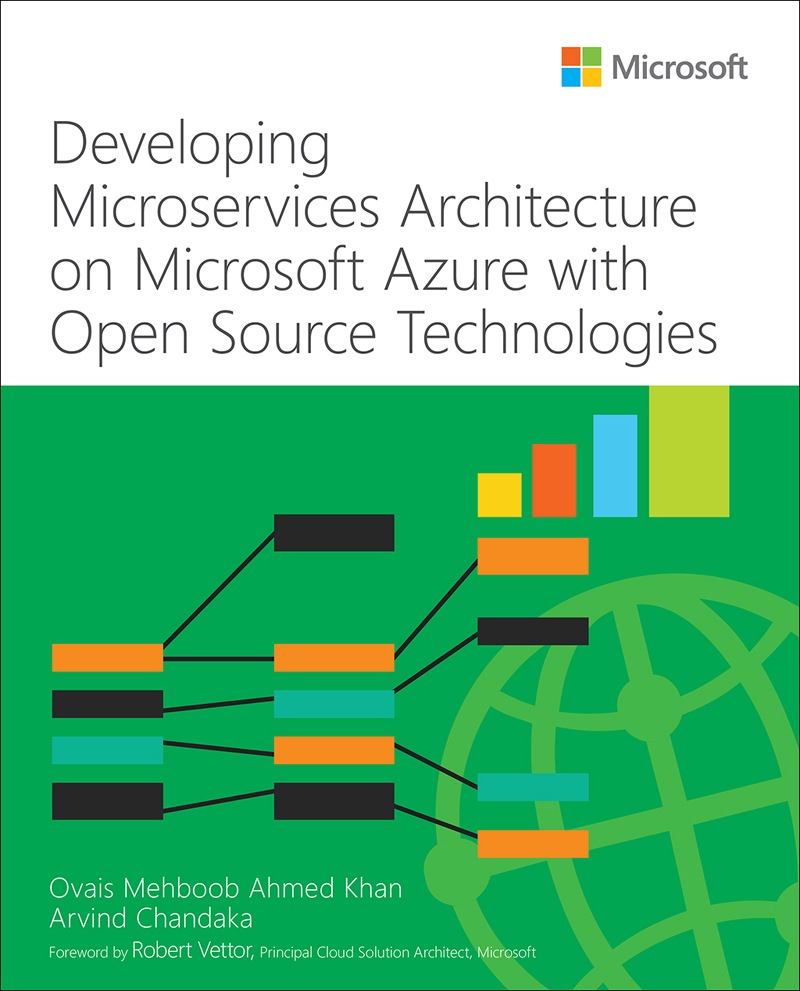

Ovais Mehboob Ahmed Khan
Arvind Chandaka
Developing Microservices Architecture on Microsoft Azure with Open Source Technologies
Published with the authorization of Microsoft Corporation by:
Pearson Education, Inc.
Copyright 2021 by Pearson Education, Inc.
All rights reserved. This publication is protected by copyright, and permission must be obtained from the publisher prior to any prohibited reproduction, storage in a retrieval system, or transmission in any form or by any means, electronic, mechanical, photocopying, recording, or likewise. For information regarding permissions, request forms, and the appropriate contacts within the Pearson Education Global Rights & Permissions Department, please visit www.pearson.com/permissions.
No patent liability is assumed with respect to the use of the information contained herein. Although every precaution has been taken in the preparation of this book, the publisher and author assume no responsibility for errors or omissions. Nor is any liability assumed for damages resulting from the use of the information contained herein.
ISBN-13: 978-0-13-681938-7
ISBN-10: 0-13-681938-9
Library of Congress Control Number: 2021937949
ScoutAutomatedPrintCode
TRADEMARKS
Microsoft and the trademarks listed at http://www.microsoft.com on the Trademarks webpage are trademarks of the Microsoft group of companies. All other marks are property of their respective owners.
WARNING AND DISCLAIMER
Every effort has been made to make this book as complete and as accurate as possible, but no warranty or fitness is implied. The information provided is on an as is basis. The author, the publisher, and Microsoft Corporation shall have neither liability nor responsibility to any person or entity with respect to any loss or damages arising from the information contained in this book or from the use of the programs accompanying it.
SPECIAL SALES
For information about buying this title in bulk quantities, or for special sales opportunities (which may include electronic versions; custom cover designs; and content particular to your business, training goals, marketing focus, or branding interests), please contact our corporate sales department at or (800) 382-3419.
For government sales inquiries, please contact
.
For questions about sales outside the U.S., please contact
.
CREDITS
EDITOR-IN-CHIEF
Brett Bartow
EXECUTIVE EDITOR
Loretta Yates
DEVELOPMENT EDITOR
Rick Kughen
SPONSORING EDITOR
Charvi Arora
MANAGING EDITOR
Sandra Schroeder
SENIOR PROJECT EDITOR
Tracey Croom
COPY EDITOR
Rick Kughen
INDEXER
Cheryl Ann Lenser
PROOFREADER
Abigail Manheim
TECHNICAL EDITORS
Doug Holland
Thomas Palathra
EDITORIAL ASSISTANT
Cindy Teeters
COVER DESIGNER
Twist Creative, Seattle
COMPOSITOR
codeMantra
I would like to thank my family for supporting and encouraging me in every goal of my life.
Ovais Mehboob Ahmed Khan
I dedicate this book to my family and friends for their everlasting encouragement and support.
Arvind Chandaka
This book involved great effort on our part. With the recent growth in microservices architecture, we saw the importance of developing a sample case study on microservices to empower our customers to build better applications. We created a use case to illustrate microservices, created a functional application, and evangelized it to our customersall before even putting pen to paper to write this book. Our friends and family were the spectators during these laborious endeavors, and they showed nothing but encouragement and understanding during long nights and tiring weekends. We couldnt have done it without them!
A big thanks goes to our managers for their everlasting support. Barbaros Gunay, Andrew McCreary, Mekonnen Kassathank you! Without your support, this book could not have been done.
When we both started working at Microsoft, we were quickly taken under the OSS Enablement Teams wing. Rick Hines and Bahram Rushenas are the team leads who encouraged us to pursue the project that ultimately became this book. Whether it was discussing a design or architecture of an application, brainstorming ideas, or presenting at events, their help and support were tremendous. We want to thank you for everything youve done.
We also want to thank Sally Brennan for preparing our session outline for Microsoft Ready, our premier go-to-market conference, which led us to further refine the content we used within our book.
We also want to thank our team at Pearson. Thank you so much, Loretta Yates, Charvi Arora, Rick Kughen, Doug Holland, Thomas Palathra, Abigail Manheim, and Tracey Croom for supporting us during our journey. We would like to thank Rob Vettor for lending his time to review our book and providing a foreword. Rob is an extremely experienced individual in microservices at Microsoft and we greatly appreciate his support.
Ovais Mehboob Ahmed Khan is a seasoned programmer and solutions architect with nearly 20 years of experience in software development, consultancy, and solution architecture. He has worked with various clients across the United States, Europe, Middle East, and Africa, and he currently works as a Senior Customer Engineer at Microsoft, based in Dubai. He specializes mainly in application development using .NET and other OSS technologies, Microsoft Azure, and DevOps.
He is a prolific writer and has published several books on enterprise application architecture, .NET Core, VS Code, and JavaScript, and he has written numerous technical articles on various sites. He likes to talk about technology and has delivered various technical sessions around the world.
Arvind Chandaka is a product manager at Microsoft and has led products across Azure and Cloud + AI Engineering. He has worked with strategy executive teams to grow Microsoft Azure as well as built IP at the company resulting in several services and products. He is a recognized SME in enterprise technology and has advised many Fortune 100 companies and international clients around the world. He specializes across infrastructure, identity, cyber security, open source, and more. A strong believer in empowerment, he works closely with startups, is a founder himself, invests in the entrepreneurial ecosystem, and serves on the board of non-profits in New York City.
Arvind earned his Bachelor of Science at Cornell University where he studied several disciplines ranging from computer science to business. In his spare time, you will likely find him at a tennis court or traveling the world for the next great foodie destination.
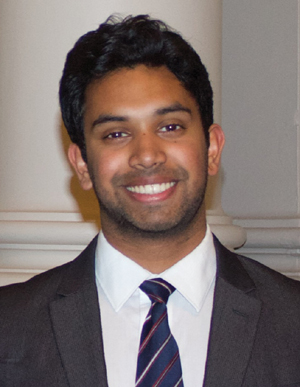
For many years, the guidance for building business applications was clear-cut:
Create a large, monolithic core that contains business logic
Persist data to a shared relational database
Expose functionality through front-end UIs and API endpoints
Font size:
Interval:
Bookmark:
Similar books «Developing Microservices Architecture on Microsoft Azure with Open Source Technologies»
Look at similar books to Developing Microservices Architecture on Microsoft Azure with Open Source Technologies. We have selected literature similar in name and meaning in the hope of providing readers with more options to find new, interesting, not yet read works.
Discussion, reviews of the book Developing Microservices Architecture on Microsoft Azure with Open Source Technologies and just readers' own opinions. Leave your comments, write what you think about the work, its meaning or the main characters. Specify what exactly you liked and what you didn't like, and why you think so.

